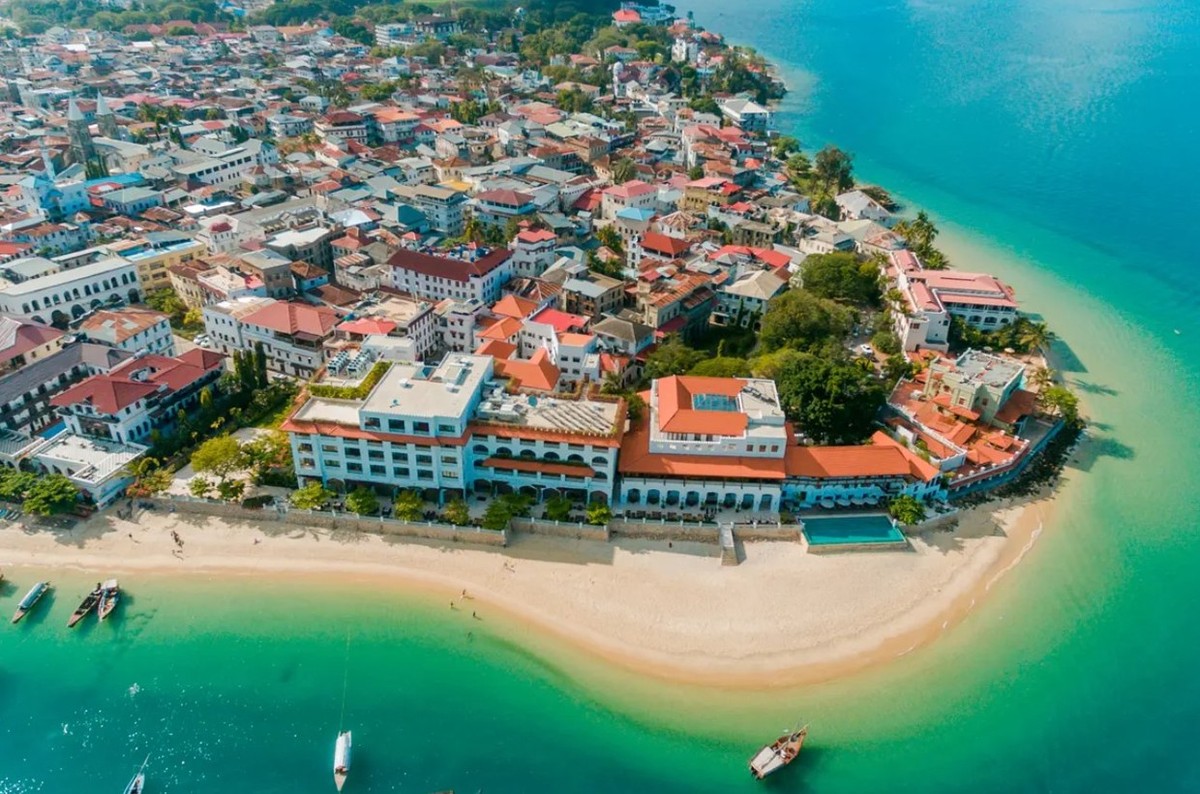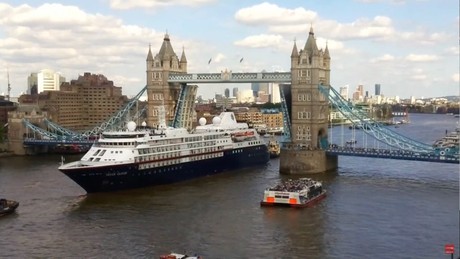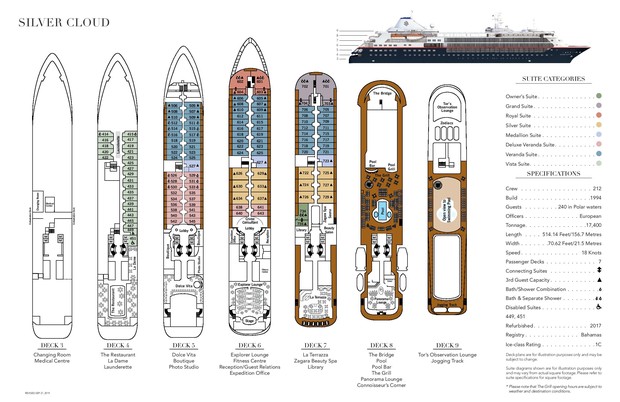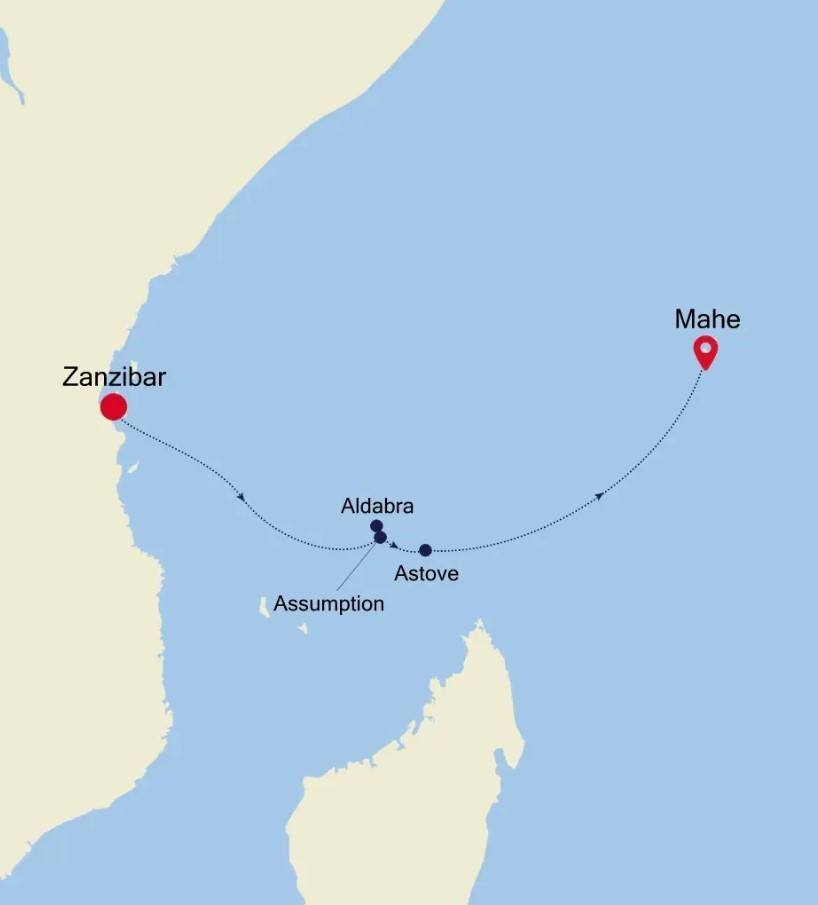
Visit Africa and the Indian Ocean where every day promises a new paradise. Sail from clear blue Indian Ocean waters and the blissful white beaches of tropical Zanzibar, all the way to Mahe’s tropical jungle and surreal natural beauty. Witness the authentic beauty of the Seychelles with a stop in Assumption Island, where the warm crystal sea is blessed by a huge coral reef, see the astonishing animals of Aldabra, and awake your inner adventurer on Astove.
- Zanzibar, Tanzania: Explore the rich cultural heritage and stunning landscapes of Zanzibar, Tanzania. From historic Stone Town to pristine beaches, indulge in the vibrant atmosphere and unique charm of this Indian Ocean gem.
- Aldabra, Seychelles: Immerse yourself in the natural wonders of Aldabra in the Seychelles, known for its UNESCO-listed atoll. Enjoy two excursions to discover the diverse marine life and unique ecosystems of this remote and protected paradise.
- Mahe, Seychelles: Conclude your journey in Mahe, Seychelles, where lush landscapes, granite peaks, and crystal-clear waters await. Relax on picturesque beaches or explore the vibrant marine life, capping off your voyage with the beauty of the Seychelles archipelago.
Availability is always subject to confirmation. Please check with us before booking flights
There are no future departures for this trip at this stage.
A tropical paradise, with swathes of long white sand and flanked by tall, skinny, palm trees, Zanzibar sits in the clear blue waters of the Indian Ocean. Part of the Zanzibar archipelago, the island – also confusingly called Zanzibar – is found just 22 miles from mainland Tanzania. Considered today as a honeymooners’ paradise, visitors will find vestiges of both Arabic and Portuguese colonialism (the island was Portuguese until 1698 when it was seized by the Sultanate of Oman), amid the picture perfect landscape. But there is much more to Zanzibar than meets the eye. With just one step off the ship, and you are already breathing the heady scents of nutmeg, cinnamon, vanilla and cloves. Rightfully known as the Spice Isle, Zanzibar was once a trading hotspot on the trading route from Arabia to Africa. At the time, the island enjoyed an influx of wealth and European bourgeoisie, with spices being traded at astronomical prices. The influences of the various colonies are glamorously reflected in the main city’s architecture. But sensual smells and beautiful beaches aside, Zanzibar has the vestiges of sinister history. The island was a capital for the slave trade in the 19th century, with an estimated 50,000 slaves passing through the Zanzibar slave market each year, with many more dying en route. The epicentre for trade was in the Market Square, in the heart of Stone Town, a melting pot of Arabic, African and European history that today is one of the world’s most popular UNESCO World Heritage Sites.
Days at sea are the perfect opportunity to relax, unwind and catch up with what you’ve been meaning to do. So whether that is going to the gym, visiting the spa, whale watching, catching up on your reading or simply topping up your tan, these blue sea days are the perfect balance to busy days spent exploring shore side.
Assumption (Assomption) Island is a small, crescent shaped island about 4.3 square miles (11.07 sq km) in size. Considered one of the Outer Seychelles Islands, Assumption is part of the Aldabra Group, lying approximately 600 miles (960 km) southwest of Mahé, in the Indian Ocean. These outer islands are not made from granite, like their larger sisters Mahé, Praslin or La Digue, but rather are coralline formations. Once a part of the French colony Réunion, then a member of the British Indian Ocean Territories, today Assumption is governed by the Seychelles. Assumption is a rough and arid island, shaded only by shrubs and palm trees but is redeemed by a spectacular reef with huge coral heads and a white ocean floor. Jacques Cousteau said he'd never seen any other place on earth with same clarity of water or diversity of reef life. He filmed large parts of documentary “The Silent World” here, and held audiences across the globe, spellbound by the magic that lay beneath the sea. A notable feature of this island is the Assumption Island day gecko, a subspecies of gecko found only on this island. Assumption is also a known nesting site for turtles and rare birds. Because Assumption Island was found to be rich in guano, coveted for its phosphorous fertilizing abilities, it was essentially plundered in the early 1900s. The island today is has an interesting geography that includes a gorgeous 3-mile (5-km) white beach, a rocky coastline, caves, and two very large sand dunes prominent on the south eastern coast of the island, one of them reaching 104 feet (32 metres) high. There is a very small settlement with less than 10 registered inhabitants, mostly in place to service the small landing strip used by scientists with permission to study the neighbouring Aldabra Atoll. The settlement is surrounded by Casuarina trees and there is an abandoned coconut palm plantation to its south. Pier Information The ship will be anchored off the coast of Assumption and tenders will land on the shoreline. We recommend you wear sturdy walking shoes, sun hats or scarves and bring your camera. Independently explore the island and relax on this peaceful dot in the ocean.
Part of the Outer Islands of the Seychelles, Aldabra is reputedly the world’s second-largest atoll and has been described as “one of nature’s treasures” and a “sanctuary”. The inner lagoon teems with marine life like eagle rays and sea turtles. It is possible to snorkel and drift along with the tide passing in or out of the lagoon as massive numbers of fish come and go through the same channels. Narrow channels between fossilized coral islands are fringed in mangrove forests supporting large colonies of nesting boobies and Great Frigatebirds. Its distinctive island fauna includes the Aldabra giant tortoise (Aldabrachelys gigantea). Approximately two-thirds of the world’s population of giant tortoises lives on Aldabra – some 100,000 out of a reported 150,000. Because of its extreme isolation in the blue of the Indian Ocean, and due to a lack of freshwater, the island has not been developed for tourism. No airport has been built, and only a handful of smaller ships with special permits are allowed to call at this unique atoll.
Awake the adventurer in you on Astove. Large atoll, part of the Outer Islands of the Seychelles, Astove is one of the remotest island of the archipelago. Other than its perfect beaches fringed with palm trees, this raised coral island has many stories to tell. Probably explored by Arab seamen and merchants between 1000 and 1500 AD, the first record of human presence on the atoll dates back to 1760. A community of slaves formed after they were abandoned on the island by a Portuguese frigate boat. After the last of them were picked up and taken away to Mozambique at the end of the 18th century, the island remained unoccupied. Until the arrival of the British businessman Mark Veevers-Carter and his family in 1968. Adventurers at heart, they successfully founded a copra plantation and chose to settle on Astove. The couple built a big house, small residencies for the Seychellois employees, a chapel, a processing centre, and a shop. His wife Wendy, who was the author Clarence Day’s daughter, even chronicled their atypical islander life with their children for an American newspaper in 1969. After the family left the island in 1970, their house was transformed into a fishing resort. That’s only in 2014 that Astove was declared a nature reserve. A reserve that is home to plenty of seabirds and extraordinary flora. The atoll is surrounded by a shallow lagoon surrounded itself by a steep drop off also called ‘The Wall’. This spot is notably known to be a scuba diving and snorkelling paradise. The waters bordering Astove are home to fan corals and a plethora of fishes. In this dramatic scenery, expect yourself to also bump into sea turtles and Aldabra tortoises, the queens of the Seychelles.
Days at sea are the perfect opportunity to relax, unwind and catch up with what you’ve been meaning to do. So whether that is going to the gym, visiting the spa, whale watching, catching up on your reading or simply topping up your tan, these blue sea days are the perfect balance to busy days spent exploring shore side.
Few places on Earth can claim to have been as blessed by nature as Mahe. Set in the remote Seychelles archipelago over 1,500 kilometres east of Mombasa, Mahe is largest of the 115 islands and is home to so many stunning attractions you won’t know where to begin. For many the Seychelles are the destination of a lifetime. Cerulean seas, miles and miles of beach, lush, tropical jungle and surreal, natural beauty as far as the eye can see. Not only does Mahe boast 68 pristine beaches, it is dominated by the towering peaks of the Morne Seychellois National Park. This splendid National Park takes up over 20% of the island and is home to a vast amount of endemic flora and fauna, including the ultra-rare Seychelles Scops-owl. Unsurprisingly, the crystal clear waters are a diver’s heaven, promising a colourful cornucopia of underwater life, regardless of how experienced you are. Despite the island being visited in 1609 by the British, Mahe did not feature on any maps until 1742, when Frenchman Lazare Picault explored the as yet unnamed islands. However, it took a further 14 years for the French to lay claim to the islands, with the arrival of naval ship Le Cerf, captained by Corneille Morphey who christened the archipelago after Vicomte Moreau de Sechelles. He did this by setting down a Stone of Possession, which is on display in the National Museum. The first settlers arrived in 1770 and 15 years later the population had swelled to 130 – 7 Europeans and 123 slaves. Today, there are 80,000 Seychellois.
Itineraries are subject to change.
Silver Cloud

| Refurbished: | 2017 |
|---|---|
| Crew | 212 |
| Tons | 17400 |
With 18-brand new Zodiacs, four superlative restaurants in Antarctica and a pole to pole expedition itinerary, Silver Cloud really does break the ice between expedition and luxury. Spacious yet intimate, designed to cross oceans and yet able to slip up rivers and into hidden harbours with ease, the yacht-like Silver Cloud carries just 296 guests in incomparable comfort and style. Combining spacious ocean-view suites and private verandas with stunning dining and entertainment options, Silver Cloud provides world-class cruise accommodations, service and amenities.
After extensive refurbishment, Silver Cloud is the most spacious and comfortable ice class vessel in expedition cruising. Her large suites, her destination itineraries and her unparalleled service make her truly special. Her four dining options will tantalise your taste buds and as 80% of her suites include a veranda, watching a breaching whale or a few cavorting penguins has never been so personal. She carries a limited number of guests in polar waters, meaning that Silver Cloud has the highest space to guest and crew to guest ratios in expedition cruising. With her 18 zodiacs, 10 kayaks, possibilities are almost limitless with ship-wide simultaneous explorations.
Deck plans are for illustrative purposes only – The actual ship and cabin layout may differ.



